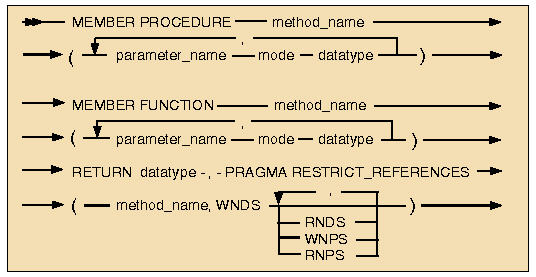Creating User-Defined Datatypes
An object type with member methods is declared in two parts:
| (i) the object type specification and (ii) the object type body. |

|
Creating Object Type Method Specifications: Syntax
| Methods are procedures or functions that are members of an object type. |

|
| Creating an Object Type Body: Syntax |

|
The object type body is created after the object type specification using the
CREATE TYPE BODY command.
The specification of each method is duplicated in the object type body, along with the actual code that will be executed when the method is called.
|
“We must be willing to let go of the life we planned so as to have the life that is waiting for us.” ― Joseph Campbell |